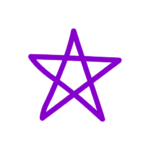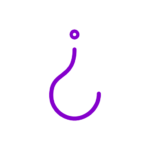I rely heavily on my note taking as a means of retaining information. Over the years, I’ve developed a system that works for me at the time of capture and helps me to synthesize and share the information after the fact.
After taking nearly 40 pages of handwritten notes at TEDSummit recently, I decided to write about how I approach this. What it boils down to is using a series of icons that make sense to me to track the most salient points, action items, things I want to research more, books I want to read, and connections I want to make.
I take both handwritten and electronic notes, depending on how quickly I need to turn something around and how fully I need to capture the information. For meeting minutes, I transcribe nearly verbatim using OneNote. I’ve created a hierarchical organization of themes over the years. This gives me an easily searchable record of things from various companies and ideas I want to keep track of long-term. My goal in this is documenting as much of the conversation as possible and consolidating information in a single location accessible across devices.
For personal meetings and conferences, I lean toward handwritten notes. Research interestingly supports improved conceptual retention when writing by hand. The act of slowing down and processing the information up front encourages you to select what you capture more carefully, according to this NPR article.
Belle Beth Cooper writes, “Studies have found the most effective note-taking techniques are active, whereas rereading, highlighting, and underlining are passive techniques. We need to interact heavily with our notes and the material we’re trying to learn if we’re to remember it,” in this FastCo article.
And later in the piece, she suggests drawing your notes. BINGO!
“Research shows if you draw something you’re more likely to remember it later.
A series of studies tested drawing against writing and other approaches for memorizing words, and found drawing came out on top.”
I’ve been exploring this for the last several months and am completely loving it.
A few snapshots from my recent TEDSummit experience:
And my system of icons (these are from The Noun Project, one of my favorite tools):
 I highlight the most salient points and quotes by putting a cloud around the text. These are things that I really want to hang on to mentally.
I highlight the most salient points and quotes by putting a cloud around the text. These are things that I really want to hang on to mentally.
 For topics I’d like to look into more, I use an arrow.
For topics I’d like to look into more, I use an arrow.
 For books mentioned in conversation…
For books mentioned in conversation…
 For ideas…
For ideas…
 For action items…
For action items…
 For people I want to connect with in the future…
For people I want to connect with in the future…
 For questions I have (for myself or others)…
For questions I have (for myself or others)…
I then take all of the analog stuff and turn it into a digital mindmap, using another favorite tool, Coggle.
My notes above turn into something like this (representation of my experiences at TEDWomen and TEDSummit):
As mentioned above, for work notes, I tend toward capturing more verbatim and less visually, though there is a strong case for graphic facilitation in the workplace.
For a recent Customer Journey Mapping Exercise with a client, I organized interview notes under the following headings:
Attendees
Important Announcements/Action Items
Delights
Disappointments
Items to Validate in Subsequent Interviews
Opportunities for Client Company Based on What I Heard
Other Key Takeaways
Detailed Notes
For pre-sales discovery calls where my goal is to set the delivery team up for success by understanding a client’s pain points and motivations, give them full project context so they buy in to the project mission out of the gate, I structure notes with these headers:
Action Items
Client Goals
Client Asks (the tactical, what do we need kinds of statements)
Pain Points/Constraints
What is your system?
=> For additional reading:
- Attention, Students: Put Your Laptops Away – NPR
-
Talk Nerdy to Me: The Science Behind Why Graphic Recording Works – ConverSketch
- The Powerful Science Behind Visual Note-Taking – ink factory
Photo by Aaron Burden on Unsplash










